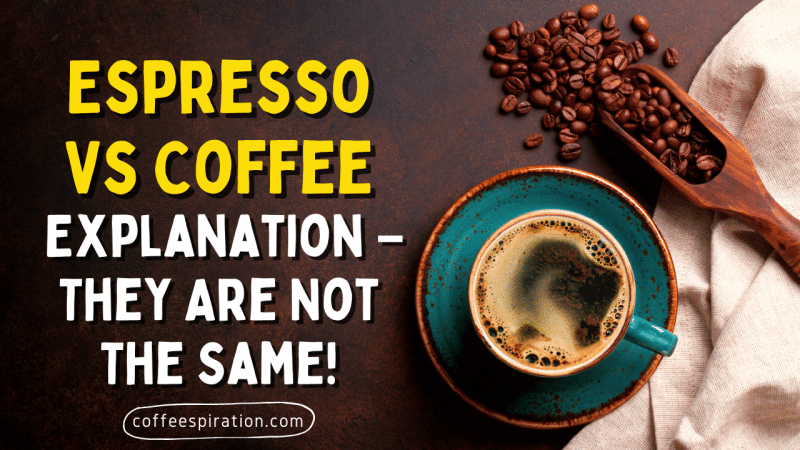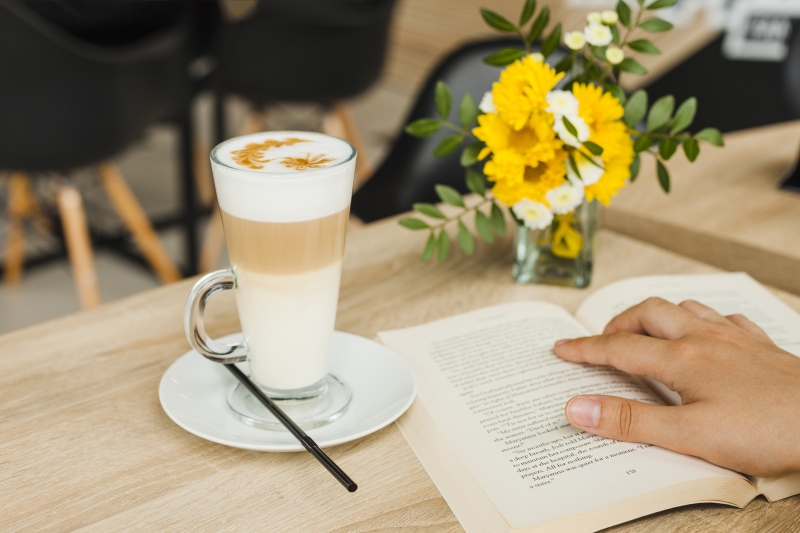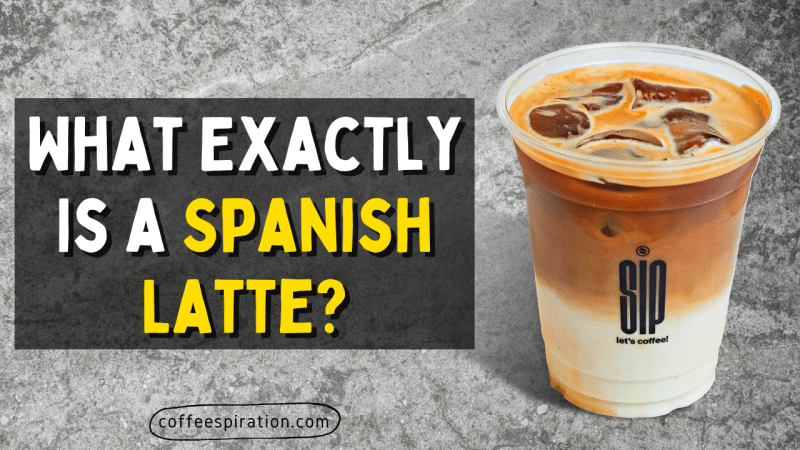Coffee is the world’s favorite daily beverage, with most people drinking 2 to 3 cups on average. There is no doubt that it offers several types of coffee drinks. When you go to a coffee shop, you would be greeted with a huge menu of coffee. Such as espresso, ice latte, americano, cold brew, Spanish latte, and so on. Sometimes, it makes you wonder isn’t that the same thing? It is all made from coffee, it ain’t be that much different from each other right? So, you might have ever thought of espresso vs coffee are the same as well, right?
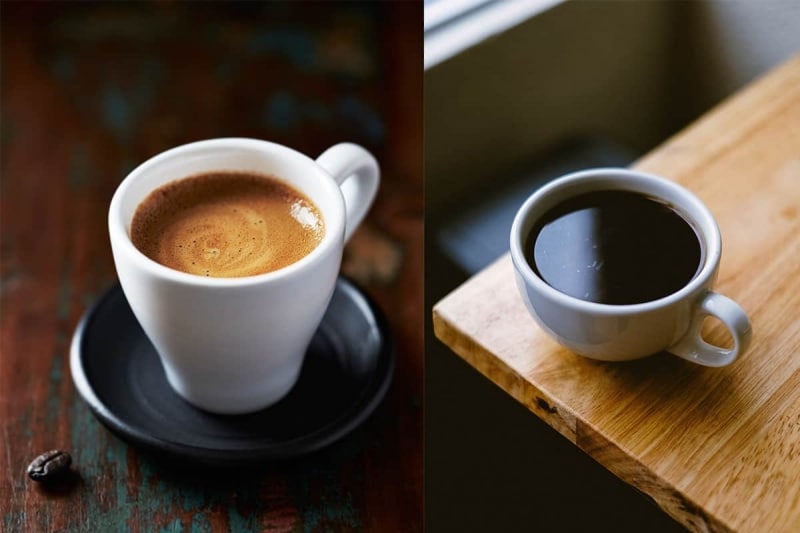
It might be shocking to you when we say that all of those names you saw on the menu are different, even though it is made from coffee. Yet, it is true that not all coffee drinks are the same. They could be differentiated by the taste profile, coffee beans, brewing method, or the extraction process.
There’s even a debate among coffee drinkers about espresso vs coffee; some think they are the same, while others say they’re radically different. Well, we are here to break it down to you about the difference between espresso and coffee. Now let’s get into it!
Contents
What’s The Difference Between Coffee And Espresso?
Let’s take a step back and look at where they came from before we get into the differences. First of all, coffee is thought to have originated in Ethiopia, between the Middle East and Europe. It was first used to improve concentration. Coffee did not become popular as a beverage until the mid-16th century. Which after countries adopted it and love the coffee tastes.
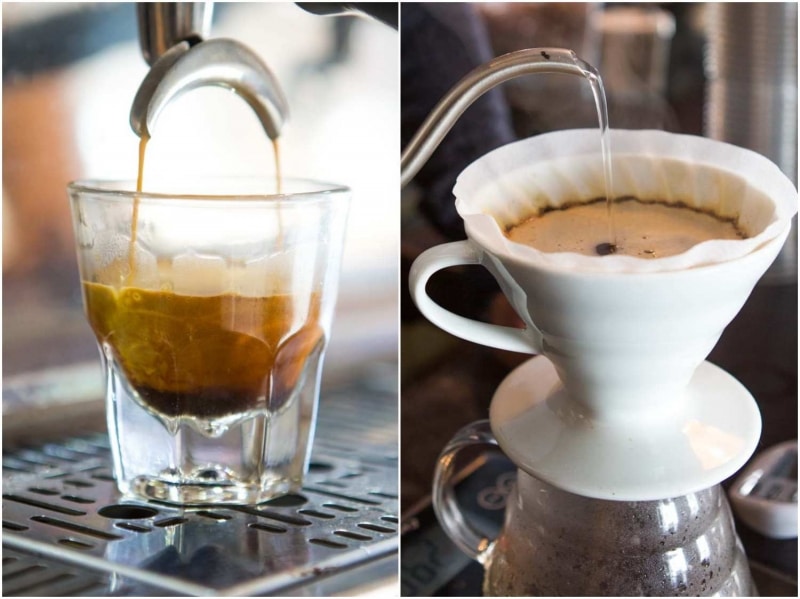
The invention of espresso resulted from a change in coffee; Caffe espresso, commonly known as espresso, was invented in Italy around the nineteenth century. The word “espresso” comes from the Italian word “Esprimere,” which translates “to press.” It was named after the method of making espresso, which involved pressing hot water into ground coffee to create an espresso shot.
The flavor of espresso and coffee distinguishes them. Regular coffee has a mild flavor and contains less caffeine; the serving size for this type of coffee is typically 8 to 10 ounces; espresso, on the other hand, has a strong flavor profile and contains more caffeine. Moreover, the caffeine concentration per double shot serving is typically 60mg – 100mg.
The Coffee Bean
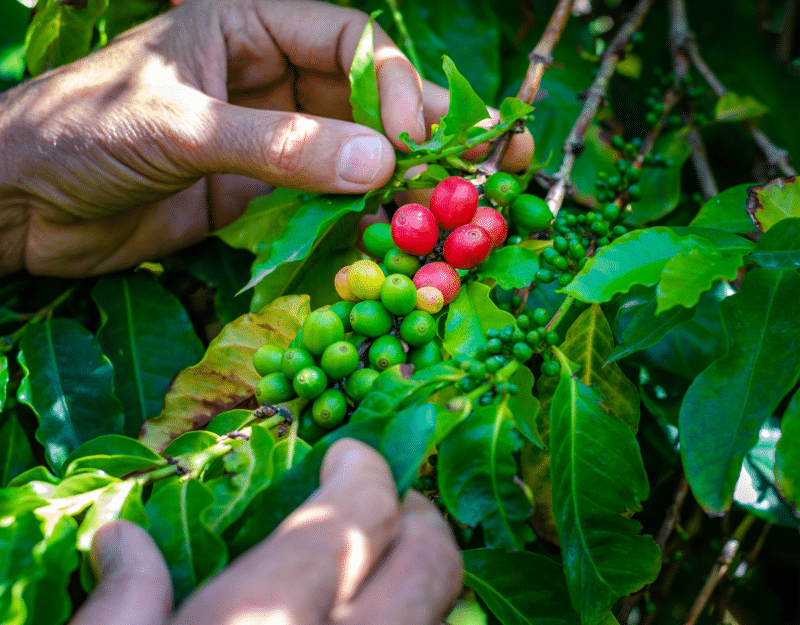
There are many different types of coffee beans on the market. Such as Arabica beans, Robusta beans, Excelsa beans, and many more. In addition, each of them has a distinct flavor that is reflected in the drinks. To make a good cup of coffee, you must select the right type of beans, the right tool to grind them, and the roasting process.
Type of Beans For Espresso and Regular Coffee
Robusta beans are the most commonly used beans in regular coffee. Robusta has that typical bittersweet taste that most people associate with the word coffee. It also has that earthy, kinda peanut taste that people get used to and that is why they are always available in your local coffee shop.
Arabica beans are primarily used in the production of espresso, specifically black coffee espresso. It’s because arabica has that famous acidity, citrusy aftertaste that a cold brew has. Thus, the strong flavor bursts in your mouth the moment it touches your tongue, and the citrusy aftertaste hits you right away.
Roasting
When the beans were harvested, they couldn’t be ground and packaged right away. Since the coffee beans have to be cleaned and roasted first. You might think that roasting those beans would be simple. Because all you have to do is stick it in the oven and roast it until it’s dark.
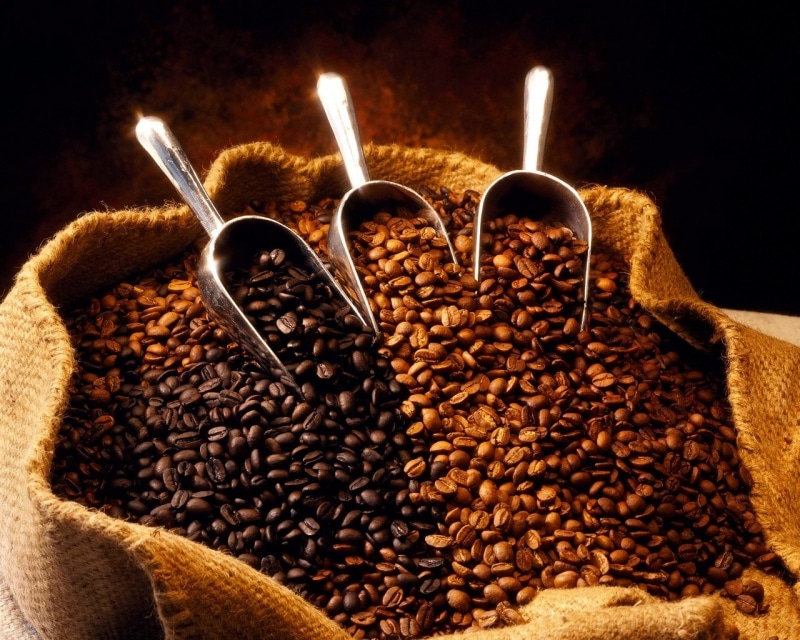
To achieve that signature taste in coffee, you must roast the beans at the optimal temperature, which is between 370°F and 540°F. Furthermore, you must pay attention to the color of the coffee beans. It may only take a few moments for the beans to go from beautiful dark roast to completely burnt.
Grinder
Each type of coffee drink requires a different level of ground coffee, which comes in coarse, middle-fine, and fine varieties. And, in order to have uniformly ground coffee, you must carefully select your grinder. There are two types of grinders available on the market today: manual grinders and grinder machines.
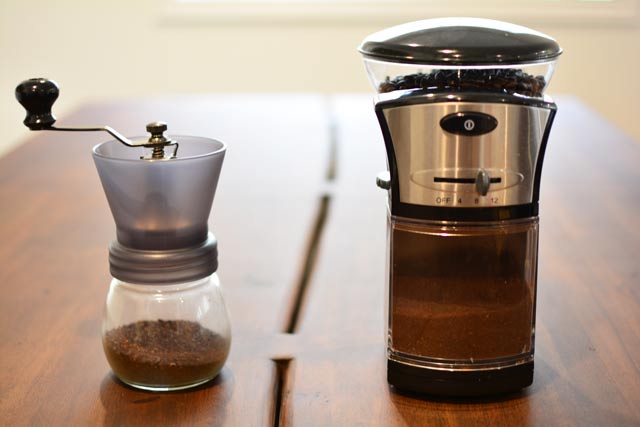
If you prefer to do things by hand, the manual grinder is ideal. But keep in mind that if you want fine grounds for your espresso, you will need to grind for quite some time. A machine grinder would be ideal for you if you enjoy working with machines and new technology. Because all you have to do is put the beans in and press. Some new grinders even included a feature that lets you select how you want it done.
If you don’t want to own a tool that only serves one purpose, like a coffee grinder, you can buy pre-ground coffee at the market. There is a wide range of options available, including espresso beans.
Storing
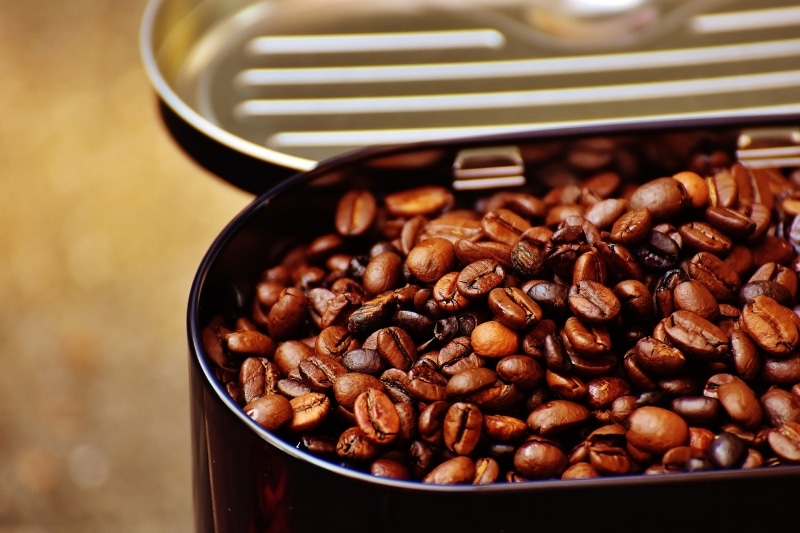
The best way to store your beans is in a dark, airtight container that is kept in a cool place. It does not matter if the beans are ground or freshly roasted. Light, heat, and humidity are their worst enemies. If you store your beans poorly, it would ruin the flavor of your espresso or regular drip coffee when you brew it.
Brewing Method
Although there are numerous ways to brew these two types of coffee, one step that always appears in the process is the blooming of coffee grounds. Blooming the coffee grounds is just a fancy way of saying that we need to wet the ground beans first.
To bloom the coffee grounds, pour hot water, preferably around 200°F, onto your coffee grounds and wait around 30 seconds for the coffee to bloom, this step may improve the taste of your coffee. Other than the blooming, it’s a whole different thing in brewing them.
Method of Brewing Regular Coffee
You can brew regular coffee using a machine or a french press, both of which work well. It just depends on your preference, the process of brewing a filter coffee is that the hot water would run through the coffee filter for a few minutes but what matters is how you grind the coffee beans.
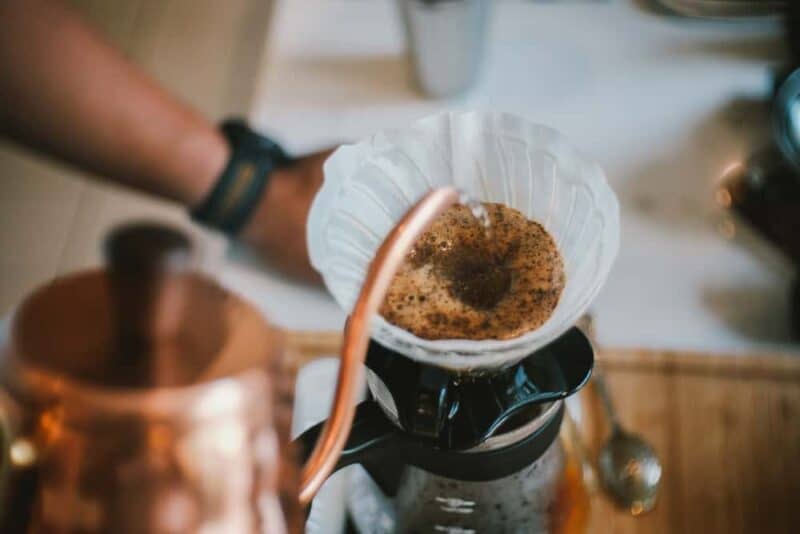
In order to get the best flavor and taste from your coffee, use coarse grounds or middle-fine grounds; if you use finely ground coffee beans, the caffeine content will be strong in your palate as well as the scent, and it will no longer have that bittersweet aftertaste.
Drip coffee is another option. This is a simple method for making coffee because all you need is a dripper, a coffee filter, and a cup. It all starts with blooming the grounds for 30 seconds before pouring the rest of the water into the filter and simply waiting for it to drip. After a few minutes, you’ll have a cup of drip coffee.
Method of Brewing Espresso
Espresso can only be brewed with an espresso machine. Because regular machines might not have enough pressure to brew the espresso drink.
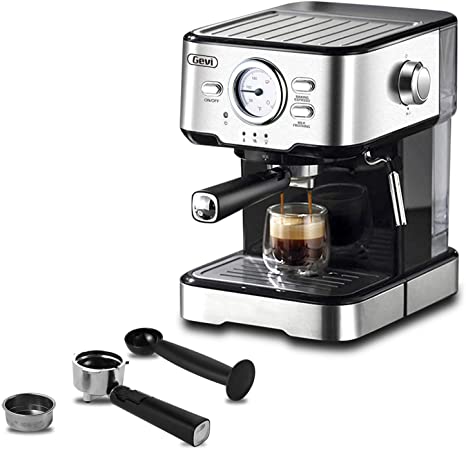
For a perfect espresso shot, you would need a fine ground coffee and high pressure. The process of making espresso includes running the hot water through the filter in a high-pressure manner which resulted in a quick brewed coffee espresso, and there’s one thing you have to know.
You can’t use a finely ground bean and there’s a difference in it; you might think fine or finely grind are the same but it’s not, the way you grind your coffee bean could directly affect the taste of your espresso drink.
Frequently Asked Questions (FAQs)
Is espresso better for your stomach than coffee?
There is a general rule that could easily answer this question: the shorter the brewing time, the better the coffee for your stomach. As a result, espresso is more digestible than filter coffee, despite its intense and strong taste and appearance.
Espresso vs Coffee: How To Choose Between These Two Drinks?
If you indulge the strong aroma of coffee with a fruity, citrusy, acidity aftertaste, espresso is the drink for you. If your local coffee shop makes espresso with a combination of Robusta and Arabica beans.
It would be a nice shot for you to order because the combination of those two ground beans would create a crema form on top of the espresso, making it more enjoyable. If you prefer a mild aroma of coffee with a bar of chocolate and nutty aftertaste, regular coffee would be a good choice for you.
Final Thoughts
Espresso vs coffee is both made from coffee and contains caffeine. Yet, there is no denying that they are not the same. Both of these drinks go through different processes, from the way the beans were ground to the brewing method. By the end of it, it is two different flavor profiles of the drink presented to you.
It’s amusing to see how even the smallest change in roasting temperature or machine pressure can have a significant impact on your coffee.
Reference
- Espresso Vs Coffee – What’s The Difference? | homegrounds
- More stomach-friendly: filter coffee or espresso? | rohebohnen
- What’s The Difference Between Regular Coffee And Espresso? | HuffPost
- How to Store Coffee | nca.
- Arabica Coffee – What Is It, And Why Is It So Great ? | coffeeandteacorner
- What is Robusta Coffee? Robusta vs Arabica: 12 Differences | EnjoyJava
What is the difference of Espresso & Drip Coffee? By Puzzle Caffe
